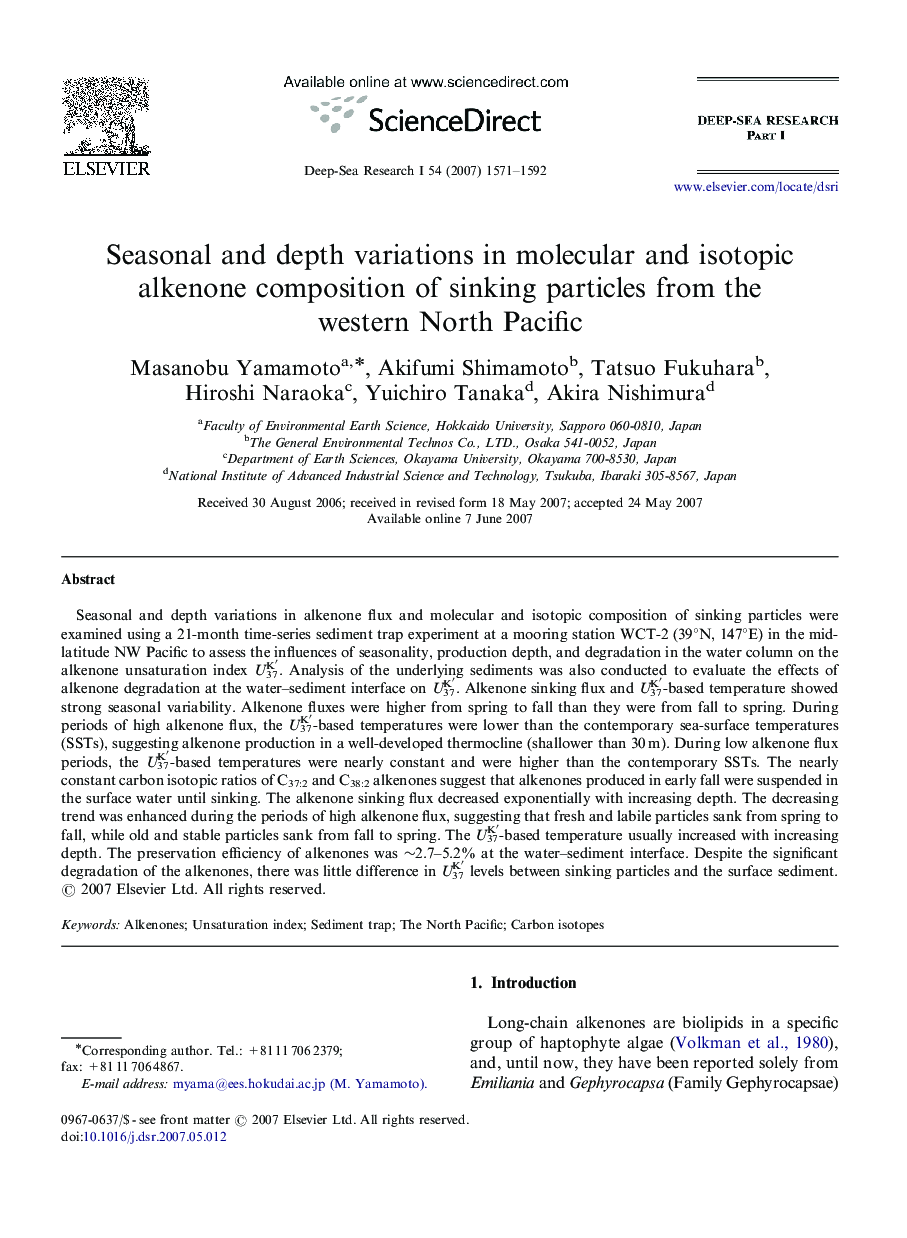| Article ID | Journal | Published Year | Pages | File Type |
|---|---|---|---|---|
| 4535586 | Deep Sea Research Part I: Oceanographic Research Papers | 2007 | 22 Pages |
Seasonal and depth variations in alkenone flux and molecular and isotopic composition of sinking particles were examined using a 21-month time-series sediment trap experiment at a mooring station WCT-2 (39°N, 147°E) in the mid-latitude NW Pacific to assess the influences of seasonality, production depth, and degradation in the water column on the alkenone unsaturation index UK′37. Analysis of the underlying sediments was also conducted to evaluate the effects of alkenone degradation at the water–sediment interface on UK′37. Alkenone sinking flux and UK′37-based temperature showed strong seasonal variability. Alkenone fluxes were higher from spring to fall than they were from fall to spring. During periods of high alkenone flux, the UK′37-based temperatures were lower than the contemporary sea-surface temperatures (SSTs), suggesting alkenone production in a well-developed thermocline (shallower than 30 m). During low alkenone flux periods, the UK′37-based temperatures were nearly constant and were higher than the contemporary SSTs. The nearly constant carbon isotopic ratios of C37:2 and C38:2 alkenones suggest that alkenones produced in early fall were suspended in the surface water until sinking. The alkenone sinking flux decreased exponentially with increasing depth. The decreasing trend was enhanced during the periods of high alkenone flux, suggesting that fresh and labile particles sank from spring to fall, while old and stable particles sank from fall to spring. The UK′37-based temperature usually increased with increasing depth. The preservation efficiency of alkenones was ∼2.7–5.2% at the water–sediment interface. Despite the significant degradation of the alkenones, there was little difference in UK′37 levels between sinking particles and the surface sediment.
